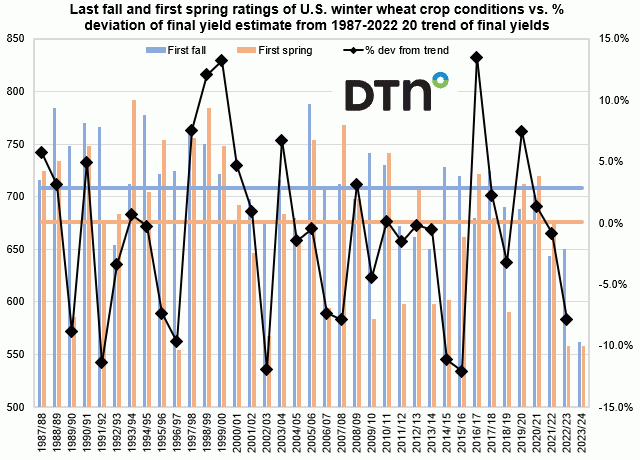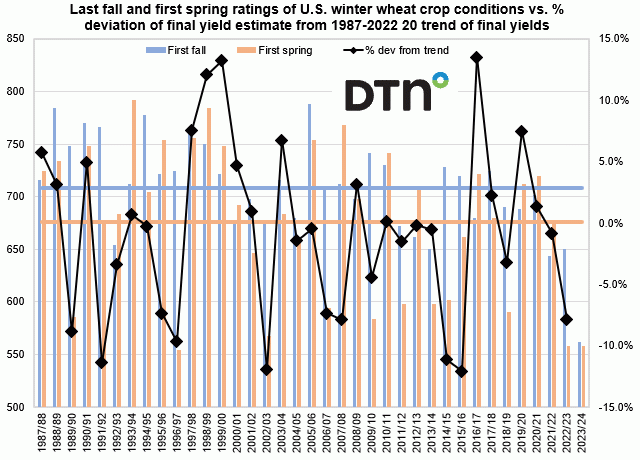Fundamentally Speaking
US Winter Wheat Conditions Declining
Last week USDA, in its first national winter wheat condition report of the spring, showed 28% of the crop in good or excellent condition and are actually down from the year ago level of 30%.
The unrelenting drought in the Southern and Central Plains that harmed the 2022 U.S. winter wheat is likely to do the same this year unless there is a sudden 180 degree turn in weather conditions.
Another week of heat and dryness resulted in further deterioration this past week as winter wheat is now rated 27% good to excellent as of April 9 according to USDA's weekly crop progress and conditions report, the second lowest ever for this time of year.
This graphic shows the last fall crop conditions for the U.S. winter wheat crop usually released the last week of November and the first spring ratings which are as of the first week of April.
P[L1] D[0x0] M[300x250] OOP[F] ADUNIT[] T[]
We use our usual ratings system where we weight the crop based on the percent in each category and assign that category a factor of 2 for very poor, 4 for poor, 6 for fair, 8 for good, and 10 for excellent and then sum the results on the lefthand axis.
On the righthand axis is the percent that that the final U.S. winter wheat yield estimate deviates from the 20-year trend.
As noted, the 2022 growing season was poor and that continued into the fall putting the 2023 crop behind the eight ball right from the start.
The final fall rating for the 2023/24 U.S. winter wheat crop came in at 562, the lowest since the USDA started tabulating winter wheat conditions back in 1987.
Things have not improved over the winter into March and April as this year's first spring rating of 558 matches the year ago figure and second lowest next to the 1996/97 season.
The past three years, both the last fall and first spring crop ratings have been below the long-term averages of 708 and 676 respectively, attesting to the fact that drought conditions in the Plains have persisted for years.
The fortunes of the crop, while rather dreary now, can improve given good rains during the reproductive phase of development, but historically final yields relative to trend are alarming when crop ratings at this point in the season are so low.
Last year's yield was 7.8% below trend and that 1996/97 yield was 9.7% below trend and 2002/03 with first spring crop rating of 568 saw final yields 11.9% below trend.
(c) Copyright 2023 DTN, LLC. All rights reserved.






Comments
To comment, please Log In or Join our Community .